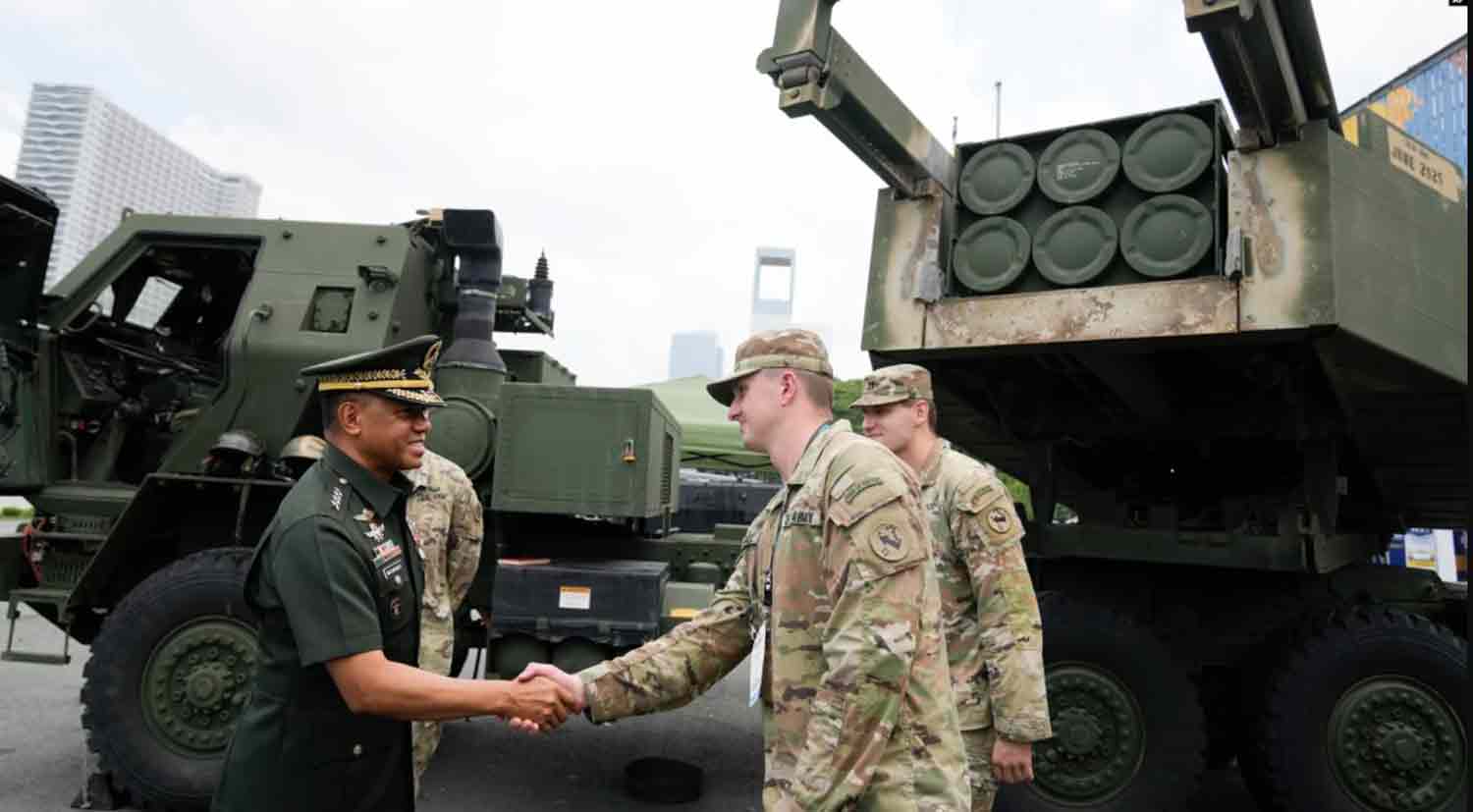On November 21, a novel type of Russian missile equipped with six warheads impacted Dnipro, Ukraine. Senior officials reported that the damage was minimal. However, this marked the first operational deployment of such a missile design, which Russian President Vladimir Putin has described as unstoppable, prompting analysis from Western military experts.
Analyzing the incident in Dnipro, the six warheads descended after being released at distinct targets by a component known as the Multiple Independently-targetable Reentry Vehicle (MIRV) bus.
Prior to the deployment of the warheads, the MIRV bus aligns itself using onboard guidance systems to ensure that each warhead is directed towards its designated target.
The MIRV bus then travels through space towards the target zone, a phase during which the missile is particularly susceptible to interception.
Following the separation from the upper stage, the MIRV bus undergoes a brief acceleration before continuing on a ballistic path towards its target.
The missile’s first stage detaches, eliminating the weight of expended engines and depleted fuel tanks.
The missile launches, driven by its initial-stage engines, rapidly gains speed as it begins to roll and align itself with its designated path.
Last week, a missile launched by Russia at Ukraine, which Putin described as a groundbreaking experimental hypersonic weapon, was actually based on established technology that has been utilized in intercontinental ballistic missiles (ICBMs) for many years, according to six military experts who spoke to Reuters.
An analysis conducted by two of these experts on the debris retrieved from the new intermediate-range ballistic missile (IRBM), referred to in Russian as the Oreshnik, or hazel tree, revealed that it released multiple payloads over the target area, a feature typical of ICBMs.
Following the missile attack, Putin claimed that the Oreshnik was hypersonic and could evade interception. However, Jeffrey Lewis, director of the East Asia Nonproliferation Program at the James Martin Center for Nonproliferation Studies at the Middlebury Institute of International Studies in California, pointed out that all ballistic missiles within that range are inherently hypersonic, and missile interceptors like Israel’s Arrow 3 and the U.S. SM-3 Block 2A are specifically designed to neutralize them.
Upon reviewing images of the wreckage, Lewis noted that the two largest fragments were components of the warhead bus, which is positioned atop the booster and ultimately releases the warheads from space onto their targets. He explained that small gas thrusters enable the bus to maneuver above the atmosphere for accurate targeting, highlighting that a “spider-shaped” piece of debris seemed to incorporate these thrusters. The other significant section of debris contained guidance systems, fuel tanks, and various electronics. The bus facilitates Multiple Independently targetable Reentry Vehicles (MIRVs), each equipped with a warhead capable of striking distinct targets.
The technology utilized in the Russian intermediate-range ballistic missile (IRBM) that targeted Ukraine is not groundbreaking; however, a detailed examination could provide valuable insights into the latest Russian missile innovations, according to experts.
“This represents a new capability, but it does not signify a significant shift in the development of conventional weaponry,” he explained. “It is essentially a combination of established technologies reconfigured in a novel manner.”
The Russian defense ministry did not respond to a request for comment from Reuters regarding this matter.
The missile, which President Putin claimed hit a Ukrainian military site, is based on the RS-26, an intermediate-range ballistic missile designed to carry a nuclear warhead. Although it underwent five tests, it was never deployed, as noted by the Center for Strategic and International Studies.
Lewis indicated that the new design likely eliminated one stage of the RS-26’s booster, which would decrease its range. He pointed out that employing the Oreshnik with conventional warheads is a costly approach “to achieve relatively limited destruction.”
The United States had contemplated a program utilizing intercontinental ballistic missiles (ICBMs) without nuclear warheads, known as Conventional Prompt Strike, but ultimately scrapped it, with William Alberque from the Henry L. Stimson Center describing the decision as “wise.” A significant concern with equipping ICBMs with conventional warheads is the potential for adversaries to misinterpret them as nuclear strikes, which could inadvertently trigger a nuclear conflict.
A U.S. official, who requested to remain unnamed due to the sensitive nature of the situation, informed Reuters that Russia had alerted Washington shortly before the strike on November 21. Another official indicated that the U.S. had informed Kyiv and its allies to brace for the potential deployment of such a weapon. Tim Wright from the International Institute for Strategic Studies remarked that this indicated Russia’s awareness of the associated risks and its intention to address them. Senior Ukrainian officials reported to Reuters this week that the missile used in the Dnipro attack was devoid of explosives, resulting in minimal damage.
In a televised address following the missile launch, Putin stated that the action was a direct retaliation for attacks on Russia by Ukrainian forces utilizing U.S. and British missiles. He cautioned that the conflict could escalate into a global war and that Russia might target military facilities in Western nations supporting Ukraine.
Sergei Markov, a former advisor to the Kremlin, told Reuters that the weapon’s deployment was symbolic, conveying a message from Putin to the West: “stand down.” Lewis pointed out that the rapid reentry of the missile was sufficient to inflict damage, even if the warhead contained non-explosive materials like metal. He observed that the warheads struck Dnipro at a steep angle, suggesting the missile was launched on a “lofted” trajectory, which involves firing it to a significantly high altitude to minimize range.
This technique is frequently employed by North Korea during its missile tests to avoid sensitive geopolitical areas. Kapustin Yar, the launch site, is approximately 800 km from the target, making a lofted attack feasible, according to Ankit Panda, a senior fellow at the Carnegie Endowment for International Peace in the U.S. Lewis also noted that the missile’s reported flight time of 15 minutes would have allowed it to cover about 1,500 km on a standard trajectory.
The precision demonstrated in the strike videos corresponds with the requirements for a nuclear weapon rather than a conventional one, according to Alberque. He noted, “If Russia is developing a MIRV with a conventional circular error probable (CEP), we have not observed it before.” A nuclear missile generally has a CEP ranging from 50 to 200 meters, indicating that half of the projectiles aimed at a target will land within that specified distance.
In the footage of the assault, each warhead seemed to release smaller munitions that were visible upon impact. Wright explained that if the missile deployed such submunitions, the issue of accuracy becomes less critical, as it would allow for a broader distribution over a large area, making it effective for targeting extensive facilities.
Lewis warned that, considering the high cost, employing this type of ballistic missile against Ukraine might serve more as a psychological strategy than a military one. “If it were inherently terrifying, (Putin) would simply deploy it. However, that alone is insufficient,” Lewis remarked. “He needed to use it, hold a press conference, and then conduct another press conference to emphasize: ‘This weapon is truly frightening; you should be alarmed.'”
Discover more from Defence Talks | Defense News Hub, Military Updates, Security Insights
Subscribe to get the latest posts sent to your email.





